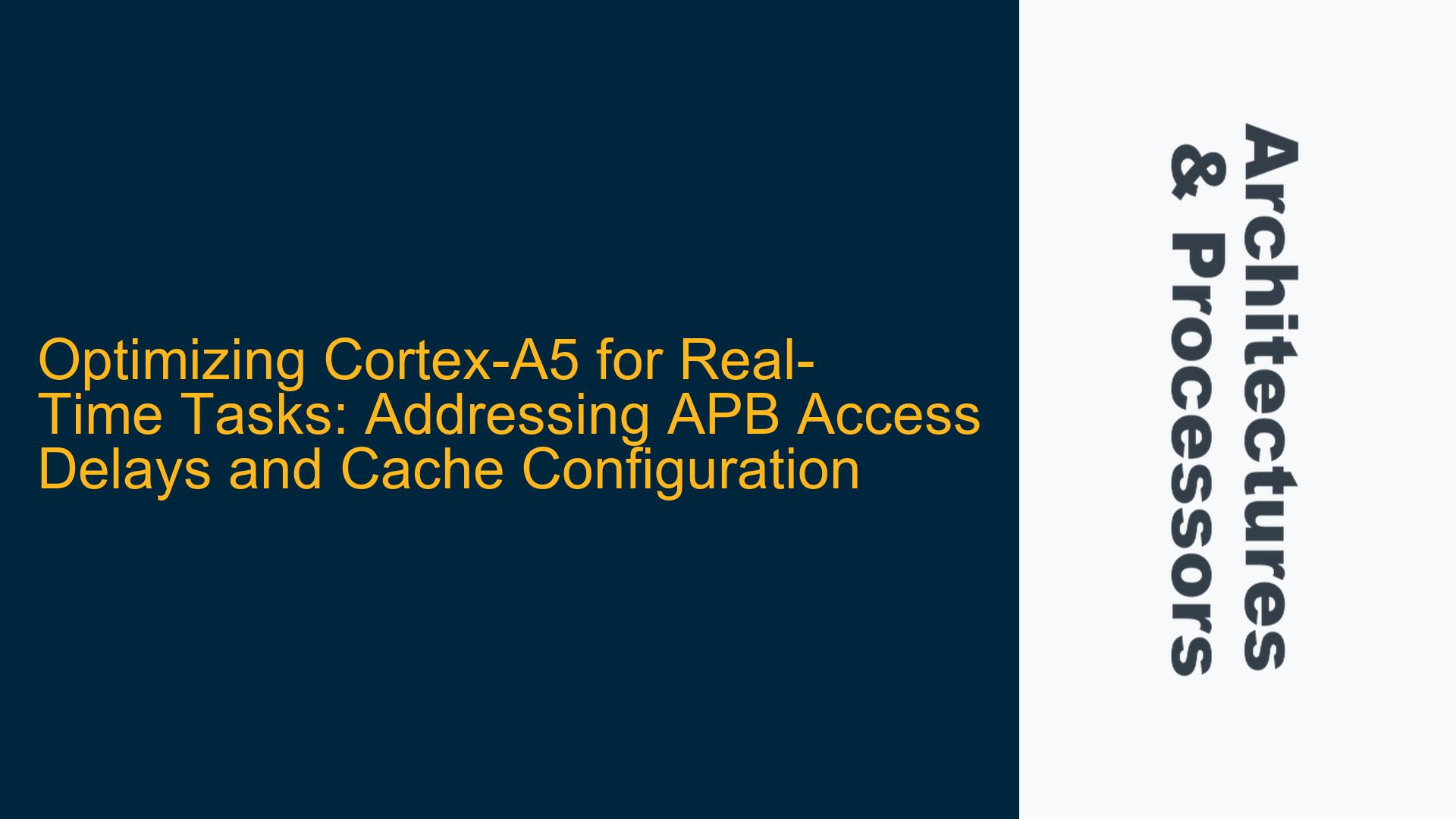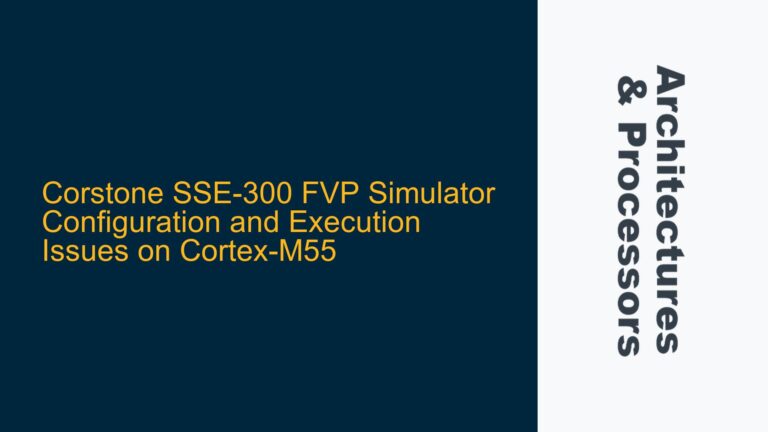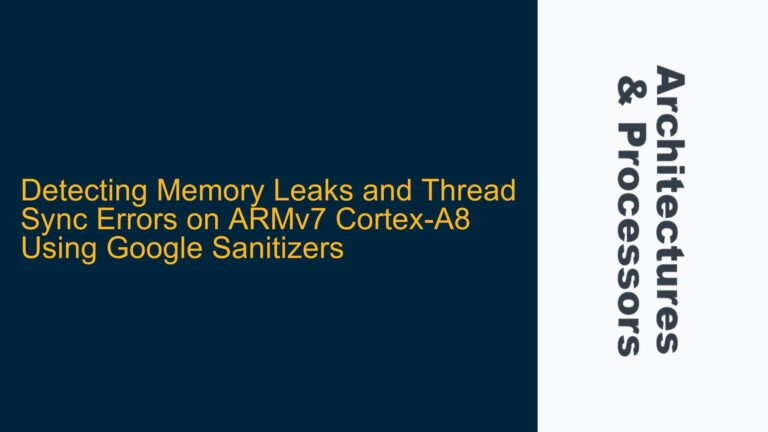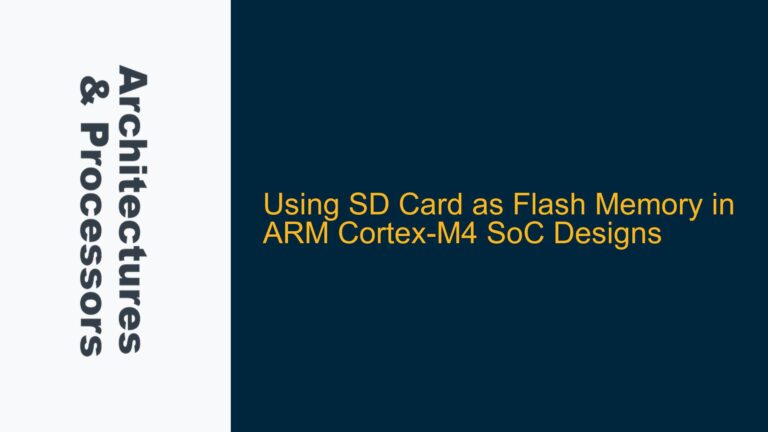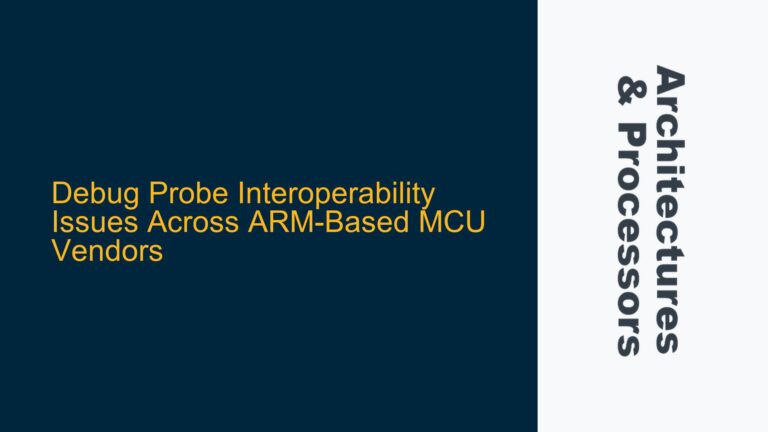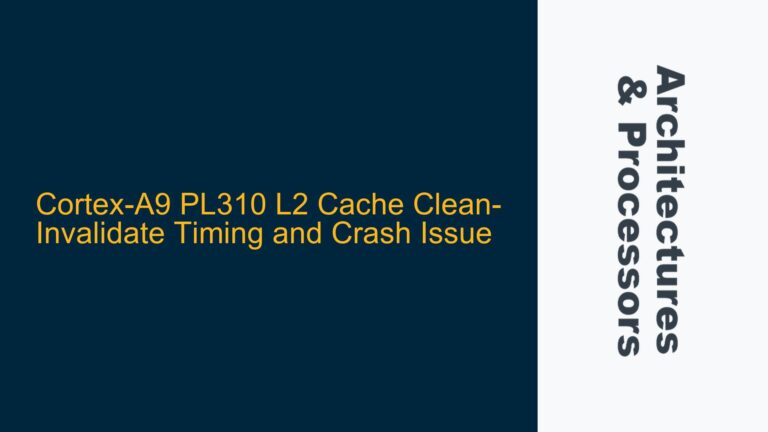Cortex-A5 Real-Time Task Execution and APB Access Latency Challenges
The Cortex-A5 processor, as implemented in the SAMA5D27 microcontroller from Microchip, is a versatile and power-efficient core designed for a wide range of embedded applications. However, when tasked with real-time operations, particularly those requiring deterministic timing, certain architectural and configuration nuances can lead to performance bottlenecks. In this case, the critical task involves iterating in a loop with each iteration constrained to a maximum duration of 1 microsecond. The primary issue observed is that the actual execution time per iteration is approximately 8 microseconds, significantly longer than the target. The root cause of this delay is traced to slow access times to peripherals connected via the Advanced Peripheral Bus (APB).
The APB is a secondary bus in the ARM Advanced Microcontroller Bus Architecture (AMBA) hierarchy, typically used for low-bandwidth peripherals such as GPIOs and SPI controllers. While the APB is designed for simplicity and low power consumption, it is not optimized for high-speed data transfers. The Cortex-A5 core, when accessing peripherals on the APB, experiences latency due to the bus’s inherent characteristics, including its lower clock speed compared to the core and the Advanced High-performance Bus (AHB). This latency is exacerbated when the core must repeatedly access peripherals in a tight loop, as in the described real-time task.
The task involves reading a 32-bit value from DDR memory, performing GPIO and SPI operations, and then storing four 32-bit values back to DDR memory. The DDR memory access, while generally faster than APB accesses, can also contribute to latency if not properly managed. The system’s configuration, including the use of caches and the Memory Management Unit (MMU), plays a crucial role in determining the overall performance. Initially, the system was configured with only the Instruction Cache (I-cache) enabled. Enabling the MMU and Data Cache (D-cache) provided a slight performance improvement, but the access times to APB peripherals remained a significant bottleneck.
The Cortex-A5 core also includes an L2 cache, which was enabled in this setup. However, the effectiveness of the L2 cache in reducing latency depends on the specific access patterns and the configuration of the cache. In this scenario, the L2 cache’s impact on APB access times is minimal, as the peripherals on the APB are not cacheable. The primary benefit of the L2 cache in this context is to accelerate DDR memory accesses, which are cacheable.
The challenge, therefore, is to optimize the Cortex-A5 configuration to minimize APB access latency while ensuring that the real-time task meets its timing constraints. This involves a detailed understanding of the Cortex-A5 architecture, the AMBA bus hierarchy, and the specific characteristics of the SAMA5D27 microcontroller. The following sections will explore the possible causes of the observed latency and provide detailed troubleshooting steps and solutions to address the issue.
Memory Access Patterns, Cache Configuration, and APB Bus Latency
The performance bottleneck in the Cortex-A5 real-time task can be attributed to several factors related to memory access patterns, cache configuration, and the inherent latency of the APB bus. Understanding these factors is essential to identifying the root cause of the delay and implementing effective solutions.
Memory Access Patterns
The real-time task involves a sequence of memory accesses, including reading from DDR memory, accessing GPIOs and SPI controllers on the APB, and writing back to DDR memory. The access pattern is characterized by a tight loop with minimal computation, making the latency of each memory access critical to the overall performance. The DDR memory access, while generally faster than APB accesses, can still introduce latency if the data is not readily available in the cache. The Cortex-A5 core’s ability to prefetch data into the cache can mitigate this latency, but the effectiveness of prefetching depends on the predictability of the access pattern.
In this case, the access pattern is predictable, as the task involves a fixed sequence of operations. However, the initial read from DDR memory may still experience latency if the data is not already in the cache. The subsequent accesses to GPIOs and SPI controllers on the APB are inherently slower due to the bus’s lower clock speed and higher latency compared to the AHB and DDR memory interfaces. The write-back to DDR memory at the end of each iteration can also introduce latency, particularly if the cache is configured in write-back mode, where data is written to the cache first and then flushed to memory at a later time.
Cache Configuration
The Cortex-A5 core includes both I-cache and D-cache, as well as an L2 cache. The configuration of these caches can significantly impact the performance of the real-time task. Initially, only the I-cache was enabled, which improved the execution speed of the code but did not address the latency of data accesses. Enabling the D-cache and MMU provided a slight performance improvement, as the D-cache can accelerate DDR memory accesses by storing frequently accessed data closer to the core.
However, the D-cache’s effectiveness in this scenario is limited by the fact that the peripherals on the APB are not cacheable. The APB accesses must bypass the cache, leading to higher latency. The L2 cache, while beneficial for DDR memory accesses, does not directly impact APB access times. The challenge is to configure the caches in a way that maximizes their benefits for DDR memory accesses while minimizing their impact on APB access latency.
APB Bus Latency
The APB bus is designed for low-bandwidth peripherals and operates at a lower clock speed compared to the AHB and DDR memory interfaces. This lower clock speed, combined with the bus’s simpler protocol, results in higher latency for APB accesses. The latency is further exacerbated by the fact that the APB is a shared bus, meaning that multiple peripherals may contend for access, leading to additional delays.
In the described real-time task, the APB accesses are a critical bottleneck, as the task involves repeated accesses to GPIOs and SPI controllers. The latency of these accesses directly impacts the overall execution time of the task, making it difficult to meet the 1 microsecond per iteration target. To address this issue, it is necessary to optimize the APB access timing and minimize the contention on the bus.
Implementing Cache Optimization, Bus Prioritization, and Peripheral Access Strategies
To address the performance bottleneck in the Cortex-A5 real-time task, a combination of cache optimization, bus prioritization, and peripheral access strategies must be implemented. These strategies aim to minimize the latency of APB accesses while maximizing the efficiency of DDR memory accesses.
Cache Optimization
The first step in optimizing the Cortex-A5 configuration is to fine-tune the cache settings to maximize their benefits for DDR memory accesses. This involves configuring the D-cache in write-through mode, where data is written directly to memory as well as the cache. This ensures that the data is immediately available in memory, reducing the latency of subsequent reads. The I-cache should remain enabled to accelerate the execution of the code.
The L2 cache should also be configured to prioritize DDR memory accesses. This can be achieved by setting the cache’s replacement policy to favor frequently accessed data and by enabling prefetching to anticipate future memory accesses. The prefetching mechanism can be particularly effective in this scenario, as the access pattern is predictable.
Bus Prioritization
To minimize the contention on the APB bus, it is necessary to prioritize the real-time task’s accesses to the bus. This can be achieved by configuring the bus matrix to give higher priority to the Cortex-A5 core’s accesses to the APB. This ensures that the core’s requests are serviced with minimal delay, reducing the overall latency of the task.
Additionally, the clock speed of the APB bus should be increased to the maximum supported by the peripherals. This reduces the latency of each access and improves the overall performance of the task. However, care must be taken to ensure that the increased clock speed does not exceed the peripherals’ specifications, as this could lead to instability or data corruption.
Peripheral Access Strategies
The final step in optimizing the Cortex-A5 configuration is to implement strategies to minimize the latency of peripheral accesses. This involves aligning the data structures used by the task to cache line boundaries, ensuring that each access is as efficient as possible. The use of cache line alignment reduces the number of cache misses and improves the overall performance of the task.
Additionally, the task should be designed to minimize the number of APB accesses required. This can be achieved by batching multiple operations into a single access, reducing the overall contention on the bus. For example, multiple GPIO operations can be combined into a single access, reducing the number of bus transactions required.
Summary of Configuration Changes
The following table summarizes the key configuration changes required to optimize the Cortex-A5 for the real-time task:
| Configuration Parameter | Recommended Setting | Rationale |
|---|---|---|
| D-cache Mode | Write-through | Ensures data is immediately available in memory, reducing read latency |
| I-cache | Enabled | Accelerates code execution |
| L2 Cache Prefetching | Enabled | Anticipates future memory accesses, reducing latency |
| APB Bus Priority | High | Minimizes contention on the APB bus, reducing access latency |
| APB Clock Speed | Maximum supported | Reduces the latency of each APB access |
| Data Alignment | Cache line boundary | Reduces cache misses and improves access efficiency |
By implementing these configuration changes, the Cortex-A5 can be optimized to meet the real-time task’s timing constraints. The combination of cache optimization, bus prioritization, and peripheral access strategies ensures that the task’s execution time is minimized, allowing it to meet the 1 microsecond per iteration target.
In conclusion, the Cortex-A5’s versatility and power efficiency make it an excellent choice for a wide range of embedded applications. However, when tasked with real-time operations, careful configuration and optimization are required to ensure that the core meets its performance targets. By understanding the architectural nuances of the Cortex-A5 and implementing the strategies outlined in this guide, developers can overcome the challenges of real-time task execution and achieve the desired performance.
